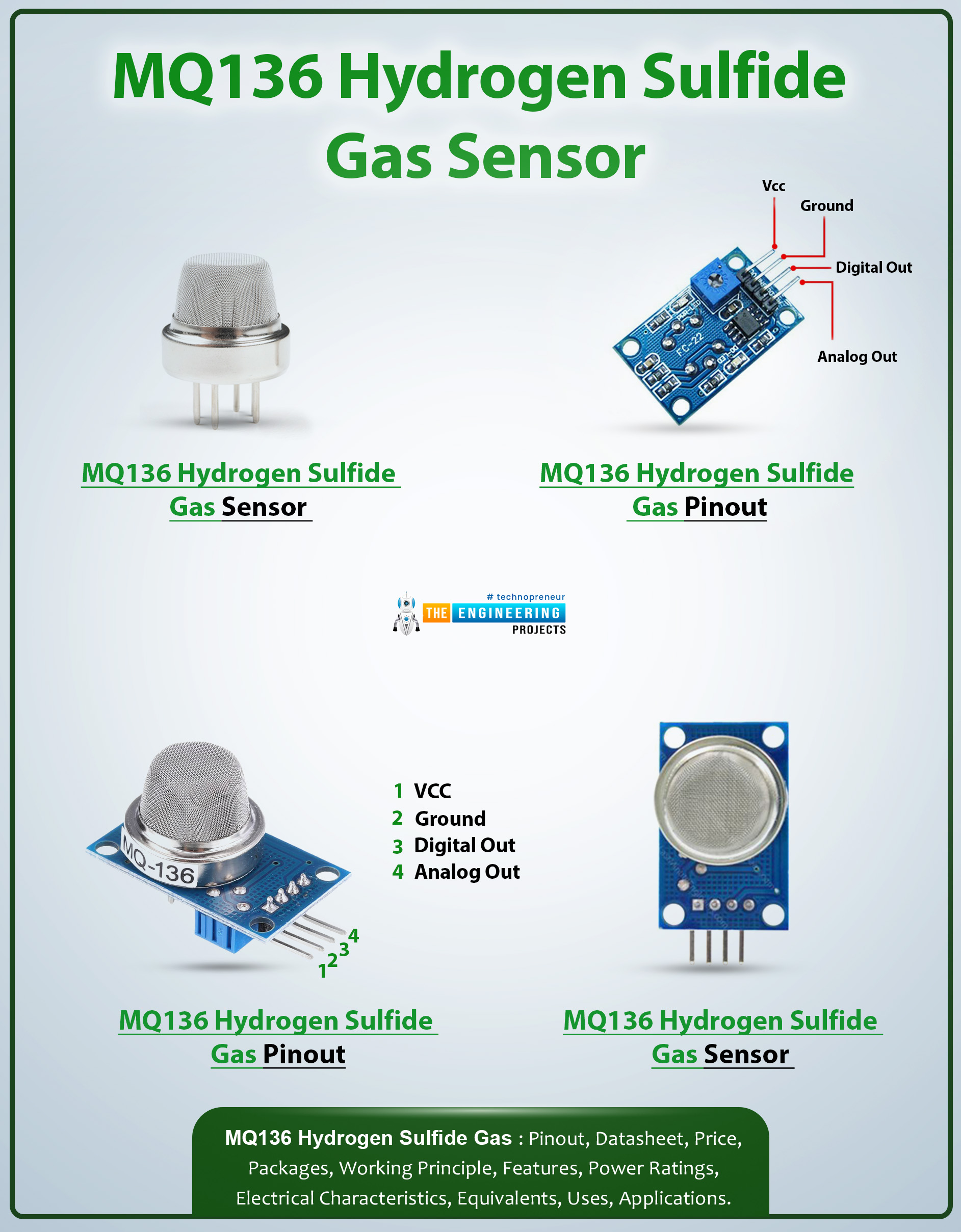
Hi friends! Welcome to another article in which we are highlighting the basic details of a gas sensor from the MQ sensor series. Today, our focus is on the MQ136 hydrogen sulfide gas sensor that instantly detects the presence of the sulfide gas and sends the signals through digital and analog pins to the output devices for timely indication.
Our mission is to understand the basic introduction of this sensor, so we’ll go through it and see the main points of its datasheet, such as its features and specifications. After that, we'll move towards the working principle and physical dimensions of MQ136, and consequently, there will be a discussion of the basic applications where this sensor is widely used. I am sure it is going to be a useful study for you, so let’s get started.
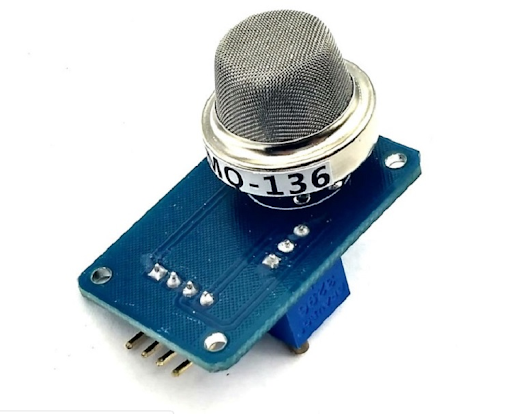
MQ136 Hydrogen Sulfide Gas Sensor Introduction
The MQ gas sensor series is popular for its instant detection of the target gases and their simple structure. The MQ136 is designed for the early detection of hydrogen sulfide gas even at low concentrations. We know that hydrogen sulfide is a colorless gas that has a pungent rotten egg odor and it causes multiple health issues. It is extremely dangerous and potentially, life-threatening if inhaled for a long time. Some immediate side effects of this gas are eye and nose irritation, headaches, dizziness, nausea, and vomiting therefore, it is important to detect the gas leakage at its early stage.
The MQ136 hydrogen sulfide gas sensor is a widely used detector that has a sensing element made of tin oxide (SnO2) that absorbs the hydrogen sulfide and the change in its electrical conductance provides information about the presence and magnitude of the target gas.
This sensor is interfaceable with different microcontrollers such as Arduino UNO, ESP32, and NodeMCU to allow communication over various mediums.
MQ136 Hydrogen sulfide Gas Sensor Basic Structure
The provided details below aim to provide insights into the fundamental components of this sensor, aiding in a better comprehension of its overall functionality and facilitating the understanding of additional information:
MQ136 Hydrogen sulfide Gas Sensor Ceramic Tube
The most basic element in the MQ136 is its ceramic tube structure. It acts as the base for the sensing element and because of its physical properties, it does not disturb the electrical resistance of the sensing element. It is present in the form of a small tube-shaped piece usually made of alumina (AL2O3) and it has excellent thermal stability.
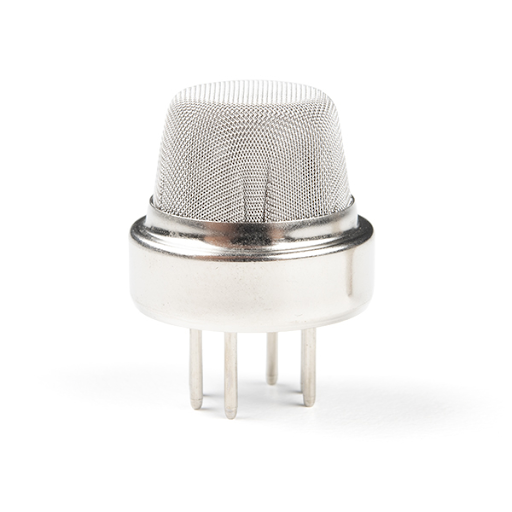
MQ136 Hydrogen Sulfide Gas Sensor Sensing Element
The sensing element is the heart of MQ136 because the analogue values of this sensor depend on the electrical resistance of the sensing element. Here, the sensing element is a tin oxide (SnO2) which instantly reacts with gases like hydrogen sulfide gas and this is the basic way to detect its presence. It is present in the form of a thin layer on the ceramic tube and requires preheating time to be ready to react with the target gas.
MQ136 Hydrogen Sulfide Gas Sensor Heating Circuit
This sensor has a heating circuit that maintains the temperature of the sensing element at a certain level. This circuit has the following components:
Heater Element Resistor: This resistor is integrated within the sensing element itself and its electrical resistance is responsible for generating the heat when the electrical current passes through the sensing element.
Series Resistor: Another resistor is connected in series with the sensing element that is mentioned as the series resistor here. The temperature control depends on the resistance value of this resistor. It performs two actions:
Limits the current flow
Controls the temperature of the sensing element
Power Supply: The resistors connect the sensing element with the power supply of the circuit. This has a 5V value and it provides the necessary voltage to the sensing element.
MQ136 Hydrogen Sulfide Gas Sensor Housing
The MQ136, just like other members of this series, has a metallic cap with ventilation holes on the sensor’s body that covers all the aforementioned components including the sensing element I’ve mentioned before. It performs two operations:
Acts as a filter to provide the protection of the internal circuit from unwanted particles and allows only the as to pass through it
Completes the sensor body structure and provides mechanical support
The other details of the structure depend on the type of sensor’s package and that will be discussed in detail in the next sections.
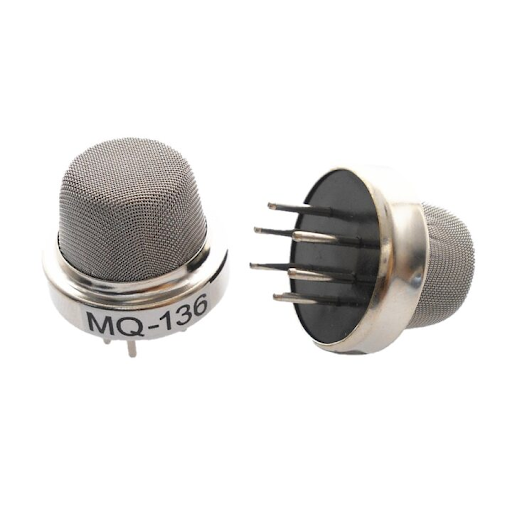
MQ136 Hydrogen sulfide Gas Sensor Datasheet
The datasheets of the product provide official and reliable information from the manufacturer that is crucial to know before using any device. Here are some important points from the datasheet of MQ136 that will help you understand the core information about this sensor:
MQ136 Hydrogen sulfide Gas Sensor Features
It has a dual signal output that includes the analogue and TTL level output (digital output)
Its TTL output signal is low if the value of the gas concentration is below the threshold value otherwise it is high.
It uses the LM393 IC as the main chip that acts as the comparator in the circuit and is helpful in comparing and presenting the digital and analogue values.
It has ESD protection. One must know that Electrostatic Discharge (ESD) is the sudden transfer of the electrical charge within the circuit that can damage it but in MQ136, the ESD protection is responsible for the health of the electrical compoeents even at high charge transfer.
It has diodes (such as the zener diode) for over-voltage protection so that the circuit may have a long life.
It has a simple structure and is easy to use.
It is present in different packages at cheaper rates.
MQ136 Hydrogen sulfide Gas Sensor Specification
Feature |
Specification |
Model |
MQ136 |
Type |
Semiconductor |
Standard Encapsulation |
Bakelite, Metal cap |
Target Gas |
Hydrogen Sulfide (H₂S) |
Detection Range |
1 - 200 ppm |
Standard Circuit Conditions |
|
Loop Voltage (Vc) |
≤ 24 V DC |
Heater Voltage (VH) |
5.0 ± 0.1 V AC/DC |
Load Resistance (RL) |
Adjustable |
Sensor Characteristics |
|
Heater Resistance (RH) |
29 ± 3 Ω (room temp.) |
Heater Consumption (PH) |
≤ 900 mW |
Sensitivity (S) |
≥ 3 |
Output Voltage (△Vs) |
≥ 0.5 V (in 50 ppm H₂S) |
Concentration Slope (α) |
≤ 0.6 (R200ppm/R50ppm H₂S) |
Standard Test Conditions |
|
Temperature |
20 ± 2 °C |
Humidity |
55 ± 5 % RH |
Standard Test Circuit |
Vc: 5.0 ± 0.1 V; VH: 5.0 ± 0.1 V |
Preheat Time |
Over 48 hours |
MQ136 Hydrogen Sulfide Gas Sensor Basic Structure
Some points about the basic structure of MQ136 are aforementioned in the features but the diagram given below will justify the basic structure pictorically:
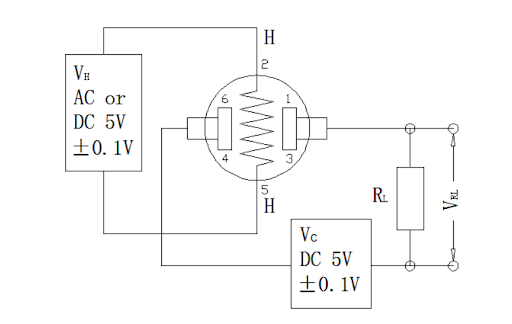
MQ136 Hydrogen sulfide Gas Sensor Temperature/Humidity Sensitivity
The performance and efficiency of the sensor may vary with some parameters such as the temperature or the humidity level in the air around it. To explain the difference, I am sharing the graph for the humidity and temperature sensitivity diagram with you. Keep in mind, that the temperature and humidity are inversely proportional to each other:
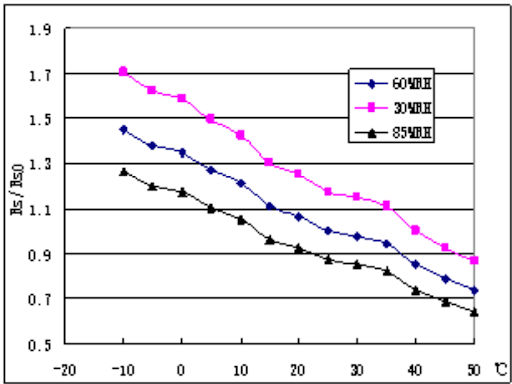
Here,
Rs = Resistance of the sensor in 50ppm H2S gas under different temperature and humidity levels.
Rso = Resistance of the sensor in 50ppm H2S gas under 20℃/55%RH.
If you want to know more details about the MQ136 sensor, be sure to explore the following link:
MQ136 Hydrogen sulfide Gas Sensor Pinout Configuration
The MQ136 sulfide gas sensor comes in different packages and the pinout configuration of these packages is different. Here is the general table of pinout configuration that explains the names and roles of each pin briefly:
Pin Name |
Possible Labels |
Description |
Power Supply |
VCC, VDD |
Connects to the positive voltage source (typically 5V ± 0.1V). |
Ground |
GND |
Connects to the ground of your circuit. |
Heater Element |
VH, HEATER |
Connects to the heating voltage source (typically 5V ± 0.1V AC/DC). |
Analog Output |
AOUT, OUT |
Provides an analog voltage signal that varies with the H₂S concentration. |
Digital Output (Optional) |
DOUT, TTL |
Provides a digital signal that switches to low voltage when the H₂S concentration exceeds a certain threshold (present in some models). |
MQ136 Hydrogen sulfide Gas Sensor Packages
As mentioned before, the MQ136 is available in different packages and the table given below will show you the features of these packages with their names:
Package |
Description |
Standard TO-18 Package |
|
Board-mounted Package |
|
MQ136 Hydrogen sulfide Gas Sensor Alternatives
The MQ136 has a high sensitivity with hydrogen sulfide gas but there are some other alternatives that can be used in place of this sensor and provide the best performance. Here are some alternatives of this sensor:
Figaro Figaro H2S-B4
City Technology Corporation (CTC) T8310
Alphasense H2S-FS-400
Figaro TGS822
Sensirion SHT11
AMS SCS SCD30
Gas Sensing Solutions GSS-H2S
Mettler Toledo InPro 5000 H2S
Teledyne API TDL-4000
Where to Buy MQ136 Hydrogen sulfide Gas Sensor
Before making a purchase decision for a sensitive device like the MQ136, it's crucial to explore various platforms and thoroughly assess both price and quality. The following platforms are recommended for acquiring the MQ136:
AliExpress
eBay
Amazon
MQ136 Hydrogen sulfide Gas Sensor Working Principle
Similar to its fundamental structure, the operational principle of the MQ136 hydrogen sulfide gas sensor is straightforward. The following steps outline its working mechanism:
MQ136 Hydrogen sulfide Gas Sensor Physical Dimensions
The general dimensions of the MQ136 hydrogen sulfide gas sensor are mentioned in the table below:
Property |
Value |
Length |
29 mm |
Width |
19 mm |
Height |
24 mm |
Weight |
8 g |
MQ136 Hydrogen sulfide Gas Sensor Applications
The hydrogen sulfide gas is less commonly used for domestic use but it has the scope at industrial levels. The list below shows the names of applications in which the MQ136 is widely used:
Domestic H2S gas alarm
Industrial H2S gas leakage alarm
Portable H2S gas detector
Domestic H2S gas alarm
Industrial H2S gas leakage alarm
Portable H2S gas detector
Wastewater treatment facilities
Air quality monitoring
Landfill gas monitoring
I hope I’ve covered all the points in this article. I started with the basic introduction of the MQ136 and saw the details of its basic structure. I also shed light on the datasheet of this sensor and then moved towards the working principle, physical dimensions and applications of this sensor. If you are interested in learning more, you can ask in the comment section.



